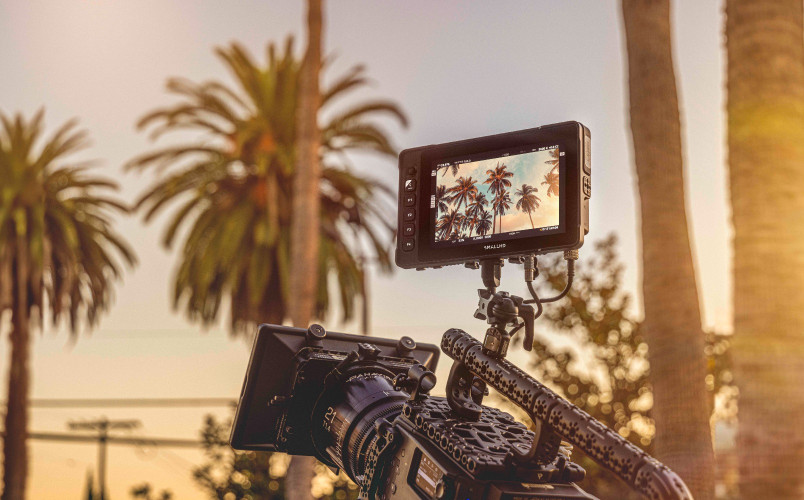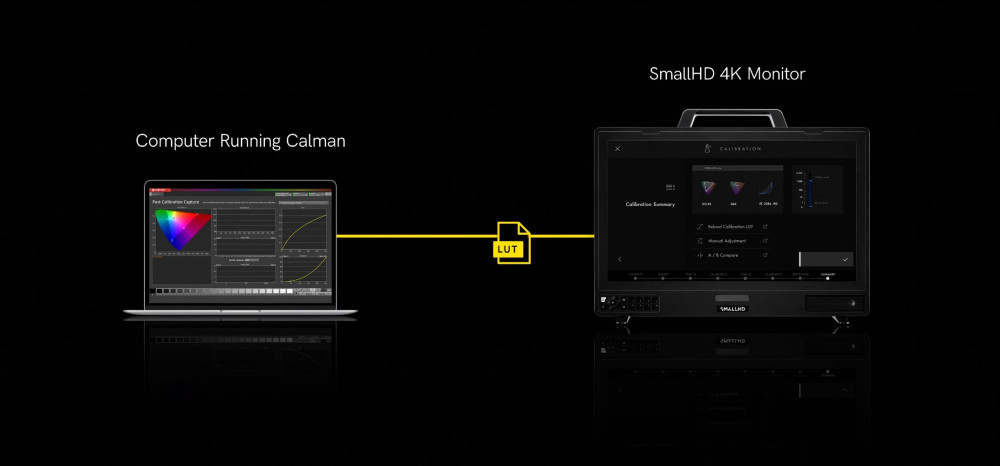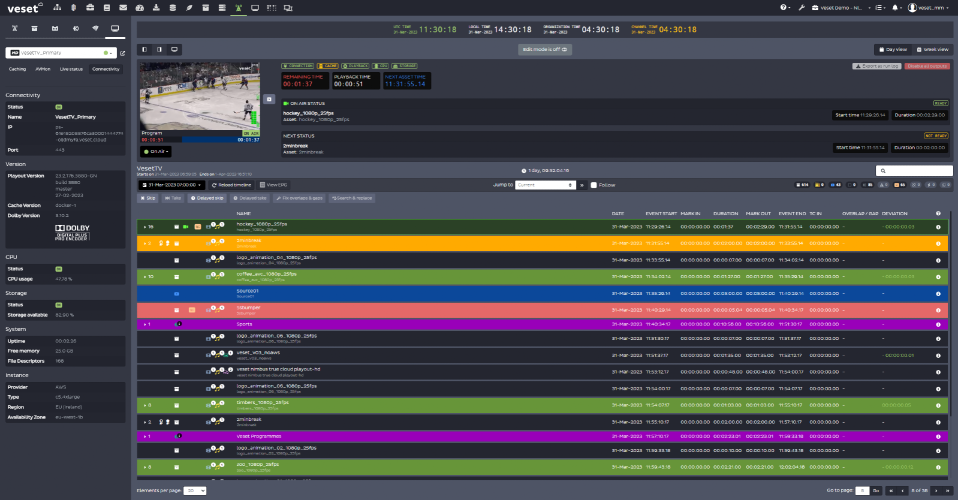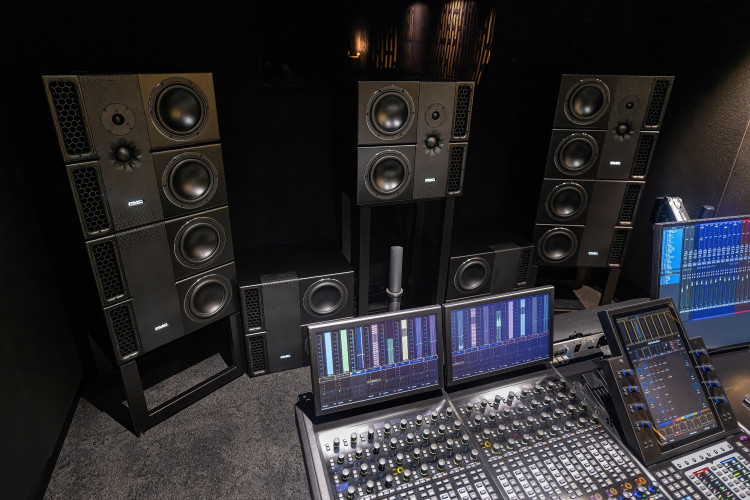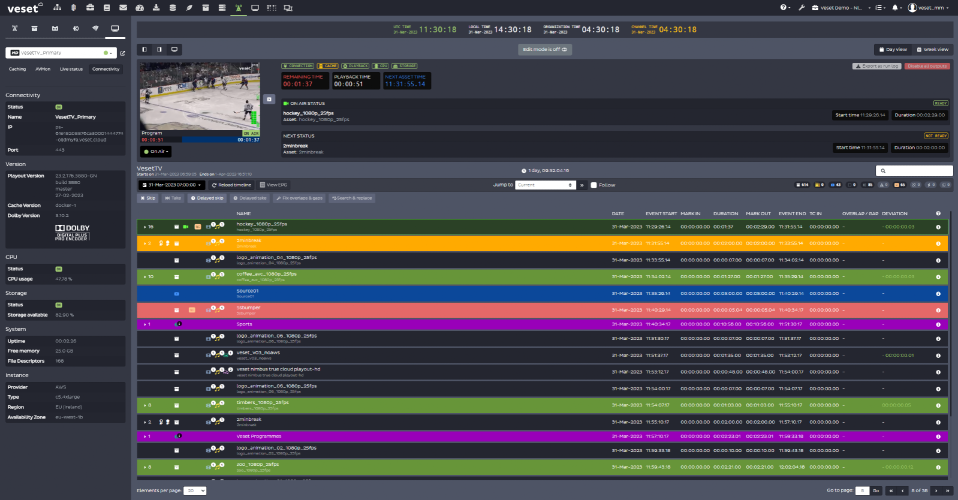Whats new in video monitoring

Author: Bob Pank#
Published 1st December 2011
The great majority of video monitoring displays in any modern broadcast presentation facility are LED-backlit LCDs. Reliable, space-efficient and economical on power, they produce excellent pictures for all but the most critical applications, usually in conjunction with one or more multiviewers to emulate a monitor stack.
Domestic television began (a bit before my time) with up-ended Cinemascope: Baird’s original 1928 Televisor had a 9:21 aspect ratio which, turned sideways, would have matched anything Hollywood cared to throw at it in later decades.
The great catch-up between film and television has been in resolution though it is likely to take a decade or two before NHK’s Super Hi-Vision becomes a practical method of viewing IMAX sized images in the average domestic living-room. Maybe NHK has factored in global warming and anticipates that the majority of viewers 20 years from will living in large marquees or watching television in their local park.
Just over a year ago there were signs that the first 21:9 LED-backlit LCDs were about to be introduced to the consumer market by Philips following previews at the September 2010 Funkaustellung in Berlin and January 2011 CES in Las Vegas. With a panel size of 56 inches, a resolution of 2560 x 1080 and 3D capability to boot, it would have given both the television industry and computer makers quite a lot of options both for straightforward home cinema and picture-in-picture viewing. Then all went quiet. I noticed no 21:9 displays at this year’s NABshow and only one at IBC. Gone away? Maybe not. Good ideas have a habit of bouncing back.
Dolby’s PRM-4200 Professional Reference Monitor is a 42-inch LED-backlit LCD display with 10-bit processing, 1920 1080 resolution and a user-adjustable luminance range of 100 to 600 candela per square metre. The monitor supports the DCI P3 colour space, allowing precise colour grading of feature films without need for a digital cinema projector. It can also emulate other display devices used for content preparation and quality control. The backlight unit consists of 1,500 RGB LEDs, with the R, G, and B elements each individually controlled. This technique independently modulates each of the 4,500 elements frame by frame, synchronous with the LCD panel. The monitor is claimed to exceed CRT performance, offering true blacks and an extended dynamic range with wide and accurate colour gamut.
Panasonic Europe recently introduced two new LED-backlit LCD video monitors for broadcast and production use: the 1920 x 1080 pixel 21.5 inch BT-L2150 (1,600 euro) and the 1280 x 768 pixel 15.4 inch BT-L1500 (1,400 euro). These include HD-SDI inputs supporting 1080/24PsF for use in digital cinema production. Additional functions include tally lamps, markers, blue-only display, adjustable colour temperature, sharpness and RGB white balance, plus a GPI remote control terminal.
Preco introduced the Cooltouch XP-2401HD monitor to the British market at IBC. This is designed for content producers and broadcasters who need to monitor digital video images, video waveforms, timecode, audio signal levels and programme sound within a single device. With its 24 inch 16:9 multi-format LCD screen, integral SD/HD-SDI de-embedder and audio confidence loudspeakers, the XP-2401HD is optimised for environments such as mobile production vehicles, post-production studios and presentation studios. Features include audio de-embedding with on-screen audio level metering, timecode display, video waveform display and a contact-closure-controlled bi-colour LED tally.
Also new from Preco, the Cooltouch RX-702HD is a dual 7 inch widescreen LCD monitor designed to fit three units of 19 inch rack space. It handles SD-SDI and HD-SDI (625/525 auto-sensing), HDMI, component, dual composite video, plus audio. Each of the RX-702HD’s two screens is a high-brightness active-matrix TFT LCD with 800 RGB triads x 480 pixels resolution. Aspect ratio is switchable between 16:9 and 4:3. Each display is complemented by its own audio monitoring channel sourced from analogue inputs or extracted from the SDI streams.
OLED technology is slowly becoming available for high-end monitoring and looks set to have a healthy future when, or if, it is successfully adopted by mainstream display manufacturers such as Samsung. Sony Professional announced additions to its OLED range of monitors with the launch of the 1920 x 1080 pixel resolution BVM-F series. This consists of the 17 inch inch BVM-F170 and the 25 inch BVM-F250. Features include a 10-bit RGB driver, multi-colour gamut, low video delay, interlace mode as well as HD frame capture and zoom functions. Both products are equipped with dual SDI inputs (3G/HD/SD), HDMI and Display Port as standard inputs.
Teletest’s £1,195 Cyclops-HD is claimed to be the world's brightest and most lightweight portable broadcast LCD monitor. It has a seven inch high-resolution screen with a 1,500 nits brightness rating and can be used without a sun hood. Available features include SDI inputs, HD-SDI inputs with 1:1 picture zoom, S3D mirror and parallel camera rig setup with colour-difference and anaglyph viewing and 5.8 gigahertz audio and video receiver (allowing use as a wireless director's monitor), and internal stereo loudspeakers.
TVLogic’s /473W are 24 inch and 47 inch (respectively) 1920 x 1080 resolution 2D and passive 3D LCD panels designed for use as broadcast and post-production monitors. A built-in 3D lookup table with preset or user-definable colour spaces is designed to allows accurate color visualisation in 2D or 3D modes. TheTDM-243W/473W can accept multiple 3D signal formats (3G, dual link L/R, filed sequential and side-by-side HD-SDI). Designed for broadcast OB, production, and post-production environments, the TDM-243W/473W accepts a wide variety of SD and HD digital and analog video formats. Additional features include horizontal flip, two internal speakers, HDMI 1.4 support, waveform/vectorscope, closed captioning support, horizontal/vertical delay, eight-channel embedded audio metering and timecode display.
Designed for use with compact cameras, the TV Logic LVM-074W incorporates a waveform/vectorscope, built-in HDMI to HDSDI conversion output, horizontal and vertical image flip, focus assist and audio level meter. A feature claimed as unique to the LVM-074W is a user-selectable temperature adaptive colour function that measures LCD panel temperature and automatically compensate the white balance drift caused by a cold or hot weather.









